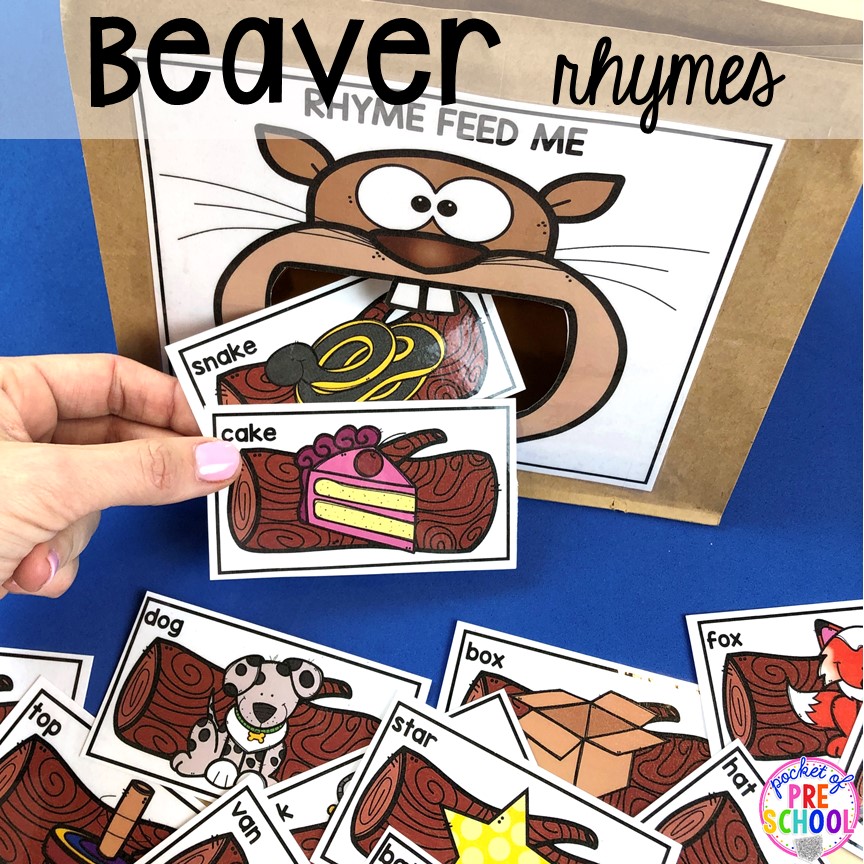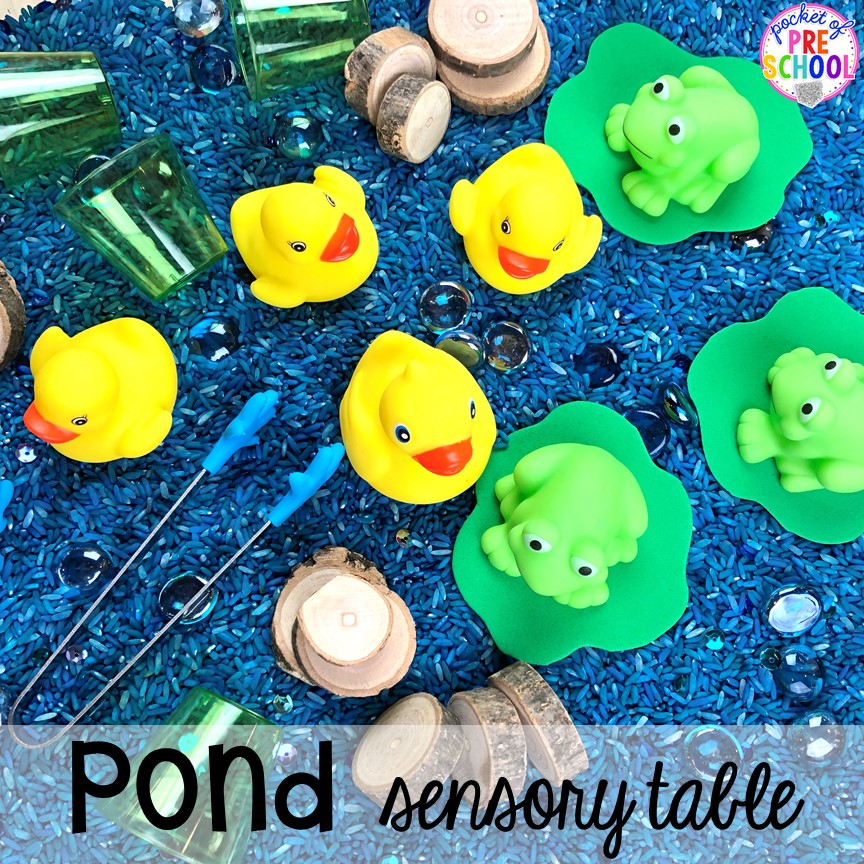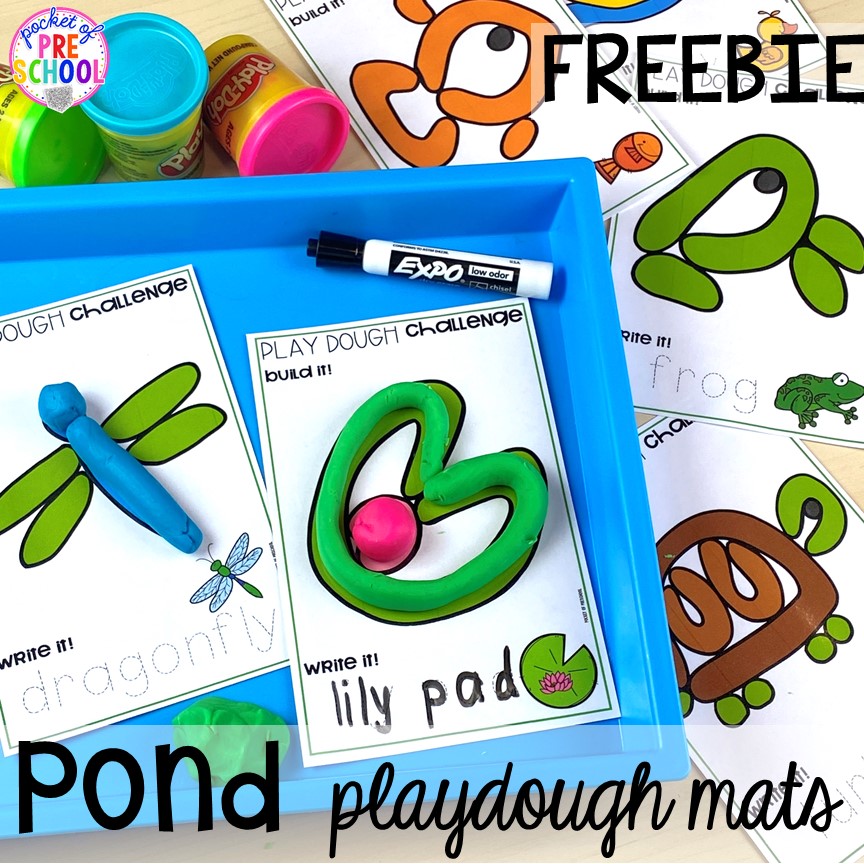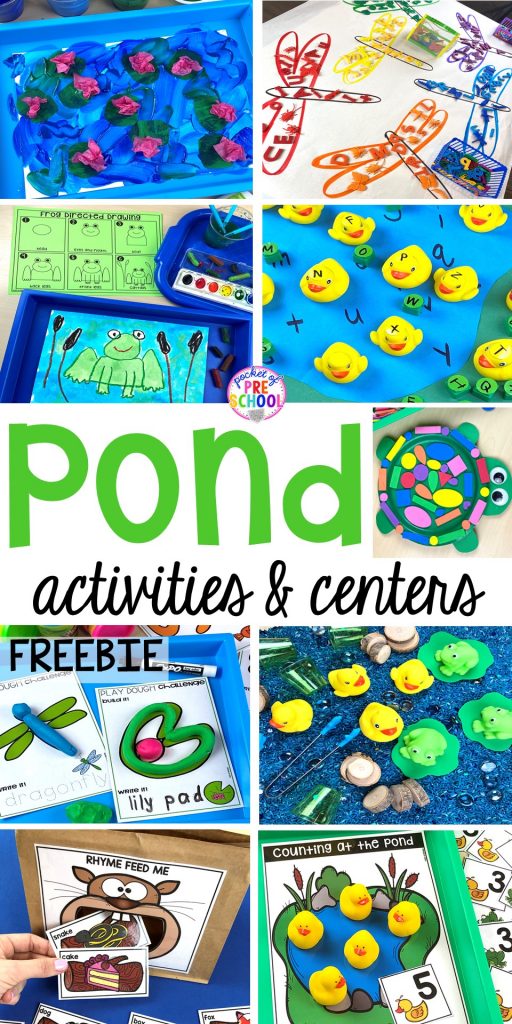
Grab the FREEBIE by entering your email in the box at the bottom of this post. This post contains affiliate links which means I earn a tiny commission when you use my links at no cost to you.
Need all the pond printables? Grab the Pond Math and Literacy Centers HERE and the Pond Science Unit HERE!
>>Grab the FREEBIE by entering your email in the box at the bottom of this blog post!<<

Students paint the water first. Then glue the lily pads in the paint. (We did this step when the paint was still wet.) Lastly, students crumble up the pink tissue paper circles and glue them on top of the lily pads.



If your students are getting sand everywhere, simply place a tray under the pencil box to catch all the sand.





You can also easily make story props to go with the book Five Little Ducks too!








>>Grab the FREEBIE by entering your email in the box below<<



Camping Dramatic Play! If you want to take the pond theme into dramatic play, change it into a campsite with a pond. Check out how HERE.
I hope your lesson plan book or planning web is packed with tons of fun ideas that I inspired with this post! Don’t forget to grab the Pond Play Dough Mat & Frog Directed Drawing FREEBIE. If you need all the printables, grab the Pond Math and Literacy Centers HERE and the Pond Science Unit HERE!

Love it? Pin this image?
